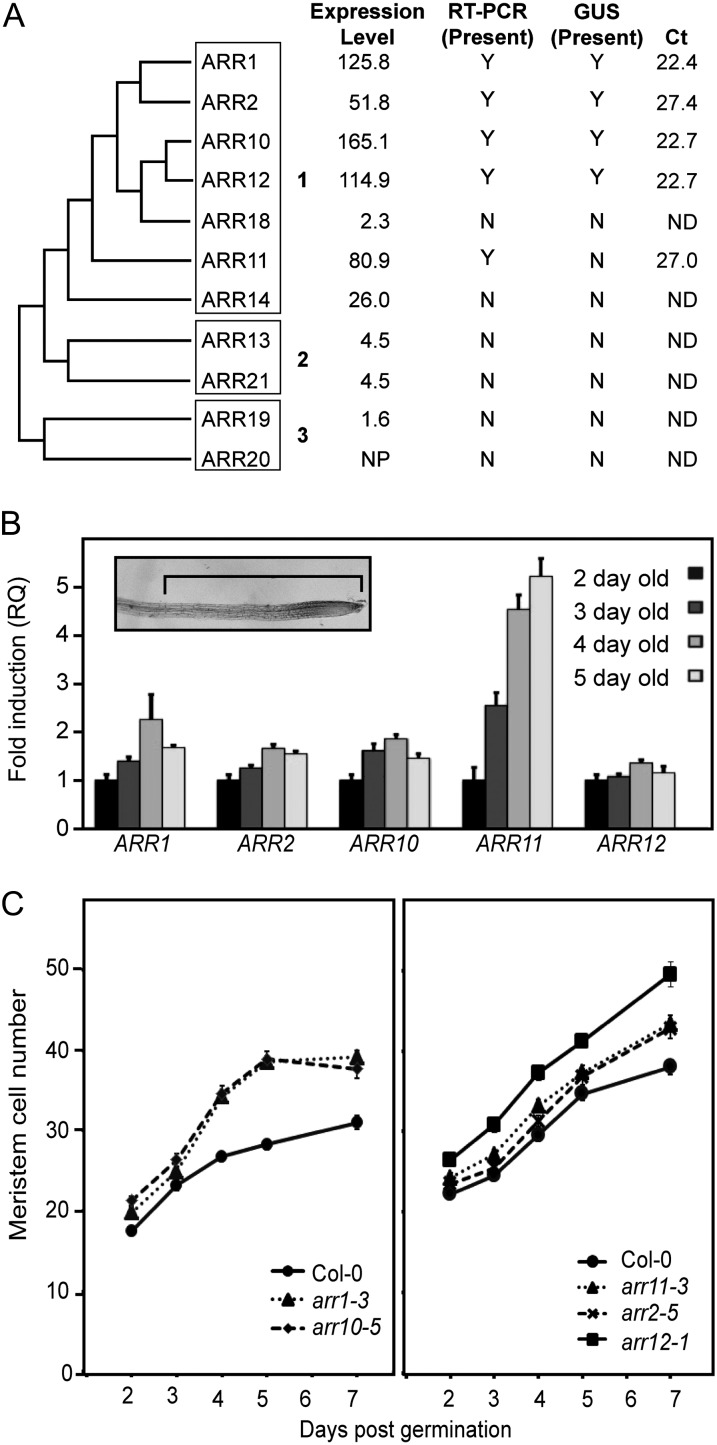Figure 1.
Expression of type-B ARRs in Arabidopsis roots varies during early stages of growth and correlates with effects on root meristem size. A, Expression of type-B ARRs based on microarray analysis, RT-PCR, GUS fusion analysis, and quantitative RT-PCR. A cladogram based on the receiver domains of subfamily 1, 2, and 3 type-B ARRs was constructed using the phylogeny.fr pipeline (Dereeper et al., 2008). Absolute expression level in 17-d-old roots is derived from the microarray data of Schmid et al. (2005), as accessed through the Arabidopsis eFP Browser (Winter et al., 2007), with the housekeeping gene β-TUBULIN3 (At5g62700) having an expression level of 1264.4 by way of comparison. The presence (Y) or absence (N) of the type-B ARRs in roots based on RT-PCR and translational GUS fusions is from Mason et al. (2004). Average Ct values are from the point of maximal expression based on quantitative RT-PCR analysis in root tips, with a lower Ct value indicating higher expression. NP, Gene was not represented on the array; ND, not determined. B, ARR1, ARR2, ARR10, ARR11, and ARR12 transcript levels in root tips 2, 3, 4, and 5 d after germination. Transcript levels are expressed relative to day 2. Inset image shows a 5-d-old root tip (tip on right) with the 1-mm region used for isolation of RNA indicated. C, Effect of individual arr mutations on meristem size. Meristem size was determined by counting cell number as described (Dello Ioio et al., 2008b). Error bars represent se. Significant differences from the wild type (Bonferroni-corrected comparison of statistical difference, P < 0.05) are found for arr1 (days 4–7), arr2 (days 4 and 7), arr10 (days 2 and 4–7), arr11 (days 5–7), and arr12 (days 2–7).

